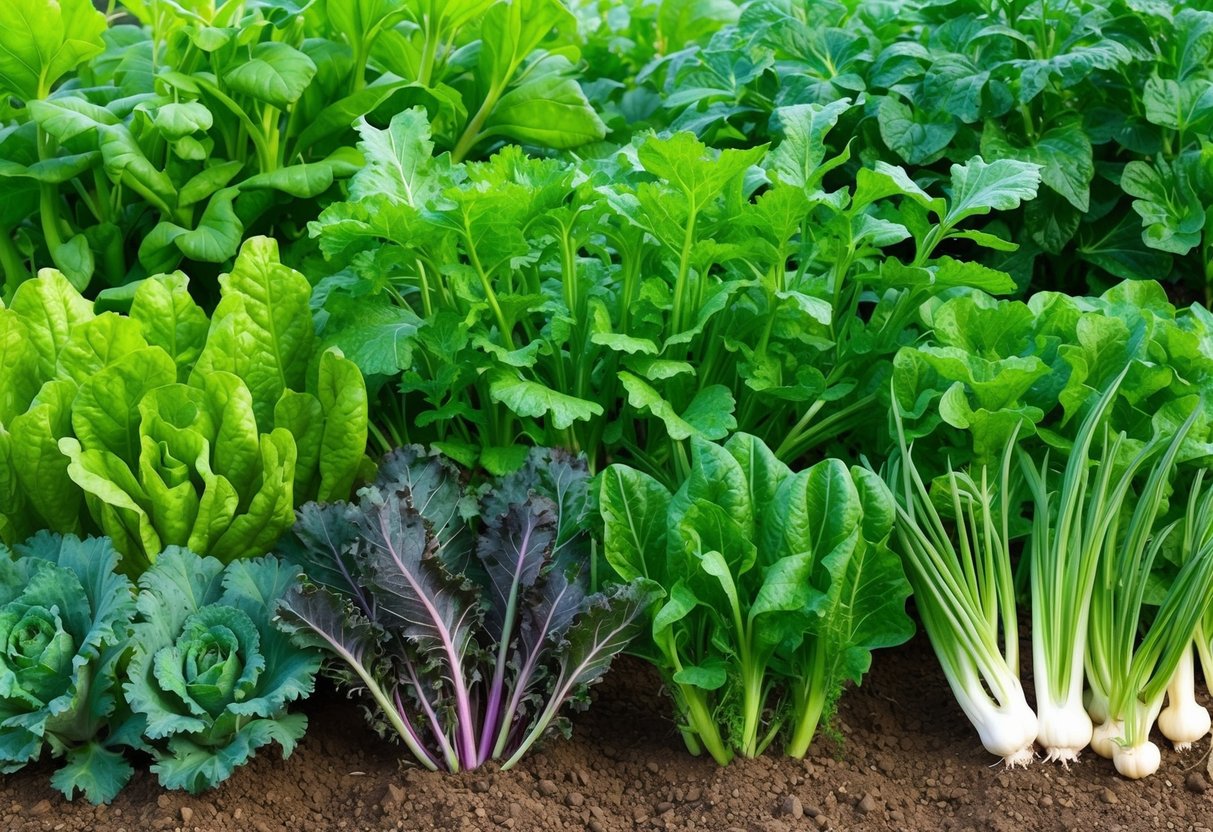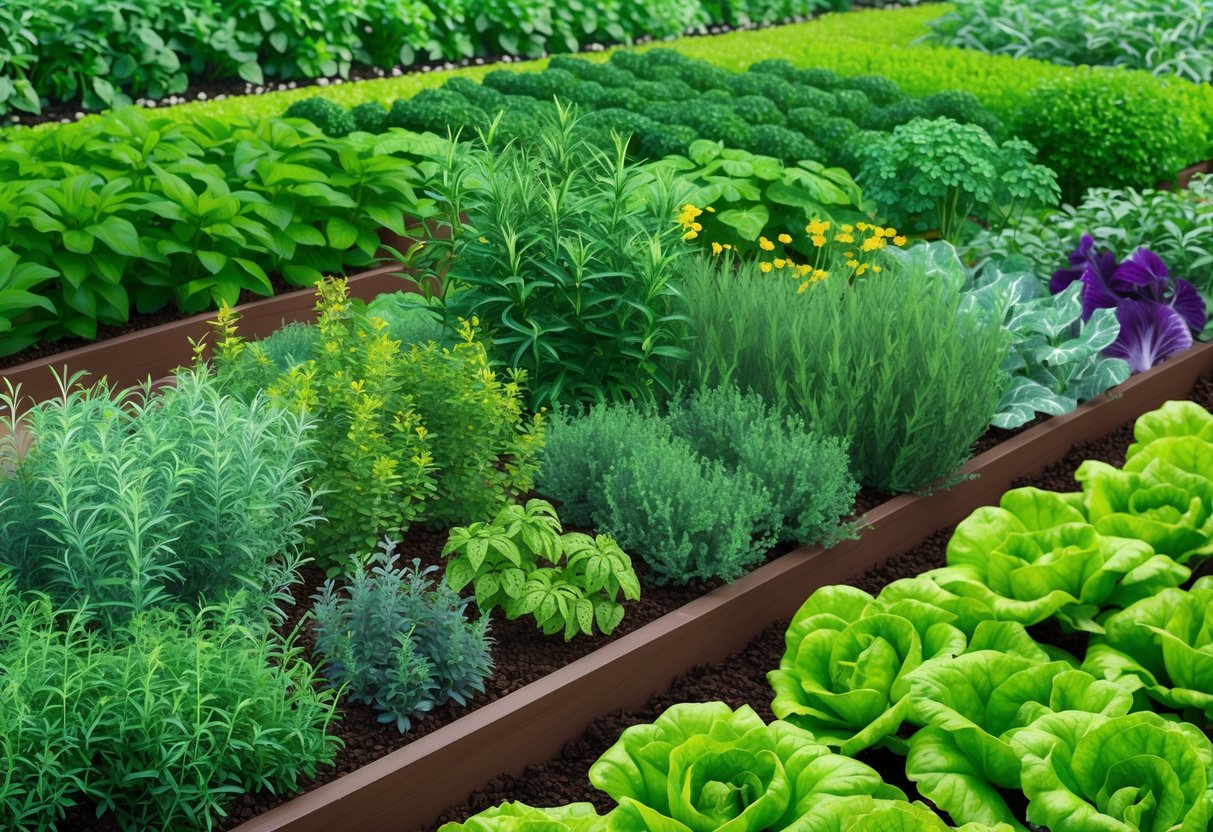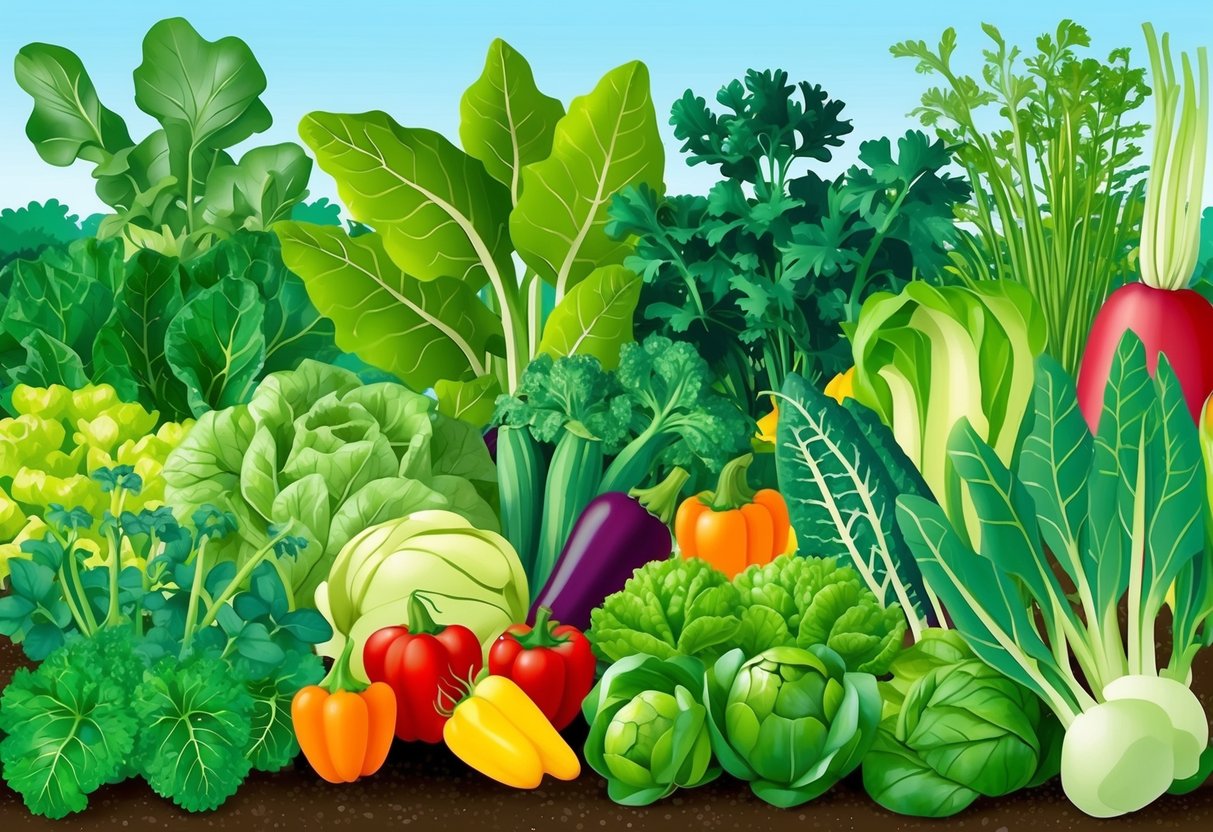
Squash Bugs and Cucumber Beetles
Squash bugs and cucumber beetles attack cucurbit crops, causing wilting, yellowed leaves, and transmitting bacterial wilt. Early diagnosis is key, as infestations tend to develop rapidly in warm weather.
Physical barriers such as floating row covers prevent adults from reaching young plants in the spring. Handpicking and destroying egg clusters found on the undersides of squash and cucumber leaves can limit outbreaks.
Companion planting with nasturtiums, radishes, or marigolds around squash and cucumber beds repels adult pests and attracts beneficial insects that prey on their larvae. Mulching with straw or using trap crops like blue hubbard squash helps concentrate pests in specific locations, making management easier and reducing damage to primary crops.
Deterring Root Flies and Cabbage Moths
Root flies target brassicas like radish, cabbage, and broccoli, damaging roots and leading to weak, stunted plants. Cabbage moth caterpillars defoliate brassicas, causing significant yield losses.
Floating row covers keep adult insects from laying eggs near vulnerable crops. Planting pungent herbs—such as rosemary, sage, and mint—creates an aromatic barrier that can help mask crop scents and reduce egg laying.
Interplanting onions or garlic among cabbage and other brassicas naturally confuses these pests and boosts deterrence. Removing crop debris and rotating plant families in the garden each year minimize recurring pest populations.
For additional protection, calendula and marigold blooms near brassicas attract predatory insects that feed on cabbage moth larvae and root fly maggots, assisting with non-chemical companion planting for pest control.
Incorporating Aromatic Herbs and Ornamental Plants

Aromatic herbs and flowering ornamentals are powerful allies in any vegetable garden, offering pest deterrence, pollinator attraction, and added biodiversity. Strategic planting of these species can improve harvest size, crop quality, and the health of garden ecosystems.
Sage, Rosemary, and Thyme
Sage, rosemary, and thyme are classic Mediterranean herbs that repel common garden pests and attract beneficial insects. Sage is especially useful near cabbage family crops, as its strong scent can deter cabbage moths and flea beetles.
Rosemary thrives in sunny borders and protects beans, carrots, and cabbage from insect invaders, making it a versatile companion. Thyme is valued for its ability to deter whiteflies and cabbage worms, especially when interplanted with tomatoes or brassicas.
Each of these herbs prefers well-drained soil and plenty of sun. When growing together along vegetable beds, they form a living barrier against harmful pests and add culinary value to harvests.
Gardeners benefit by tucking these woody herbs along the edges of vegetable rows, reducing the need for chemical sprays and providing fresh, aromatic leaves for cooking.
Lavender, Chamomile, and Catnip
Lavender stands out for its ability to attract bees and butterflies, supporting strong pollination rates for fruiting vegetables. It also deters moths, fleas, and whiteflies with its fragrant oils.
Chamomile is a gentle but effective companion for many vegetables, especially the brassicas and alliums, by attracting beneficial hoverflies and parasitoid wasps that help reduce aphid and caterpillar damage. Catnip is well-known for repelling aphids, flea beetles, and even squash bugs, making it a popular border plant.
It also attracts pollinators and predatory insects without being aggressive or invasive. Collectively, these herbs support soil health and resilience, reduce pest populations, and enhance the beauty and scent profile of the garden.
More about planting herbs in combination can be found at Gardening Know How’s guide on herb companion planting.
Ornamentals: Alyssum, Zinnias, and Cosmos
Low-growing alyssum acts as a living mulch, preserving soil moisture and suppressing weeds around vegetable crops. Its tiny flowers are magnets for hoverflies, whose larvae consume aphids and other small pests, benefiting lettuces, carrots, and strawberries.
Zinnias are sturdy annuals that add color while drawing in bees and butterflies. They provide pollen and nectar resources for a range of helpful pollinators throughout the summer, supporting productive tomato, pepper, and squash yields.
Cosmos offer similar benefits, with airy, daisy-like blooms that attract hoverflies and ladybugs. This increases natural pest control.
Special Considerations for Crop Pairings

Matching vegetable crops correctly increases harvests and helps prevent common gardening problems. Paying attention to which companion plants succeed together and which inhibit each other is essential for effective planting strategies.
Avoiding Inhibitive Plant Relationships
Some vegetable combinations can harm one another by slowing growth, attracting pests, or sharing diseases. For instance, beans and onions do not thrive when grown side by side.
Beans release substances from their roots that can hinder alliums, while onions can reduce the growth of legumes by competing for nutrients and moisture. Members of the nightshade family, such as tomatoes and potatoes, should not be paired because they attract similar pests and diseases like blight.
Brassicas, including cabbage and broccoli, may do poorly near strawberries or tomatoes due to incompatible soil and nutrient preferences. Keeping a list of antagonistic plant pairs helps gardeners organize their planting layout and avoid these common mistakes.
A practical technique is to rotate crops each year so the same species don’t deplete specific nutrients or foster pests that specialize in individual plant families.
Alliums and Their Unique Role
Alliums, which include onions, garlic, leeks, and chives, play a special role as companion plants. Their strong scents can repel common pest insects, including aphids, carrot flies, and Japanese beetles.
Planting alliums with carrots is a classic strategy to deter carrot rust flies, while interplanting them with lettuces and brassicas can reduce aphid infestations. However, alliums should be kept away from legumes because their root exudates may stunt bean and pea growth.
Alliums also deter rabbits and deer because of their powerful aroma. Maintaining a border of chives or garlic around garden beds not only protects vegetable crops but can also help improve the health of nearby tomatoes and peppers.
For more details about allium companion planting, several guides outline specific plant choices that maximize these benefits.
Root Depths and Sunlight Needs
Paying attention to root depths and light requirements ensures that crops don’t compete excessively for resources. Deep-rooted vegetables, such as carrots and parsnips, pair well with shallow-rooted plants like lettuce or spinach.
This reduces underground competition for water and nutrients. Planting strategies that layer crops vertically, like growing pole beans up corn stalks while squash spreads below, make efficient use of space and resources.
Sunlight compatibility is also crucial. Tall crops, such as corn or sunflowers, may shade sun-loving plants if not positioned correctly, limiting their growth and yields.
It is important to arrange companion plants so that those with lower light needs are placed in partial shade while those requiring full sun are given unobstructed access. Consider using a planting layout chart to visualize how mature plant heights and root zones interact and avoid crowding key crops.
More tips can be found in vegetable companion planting resources.